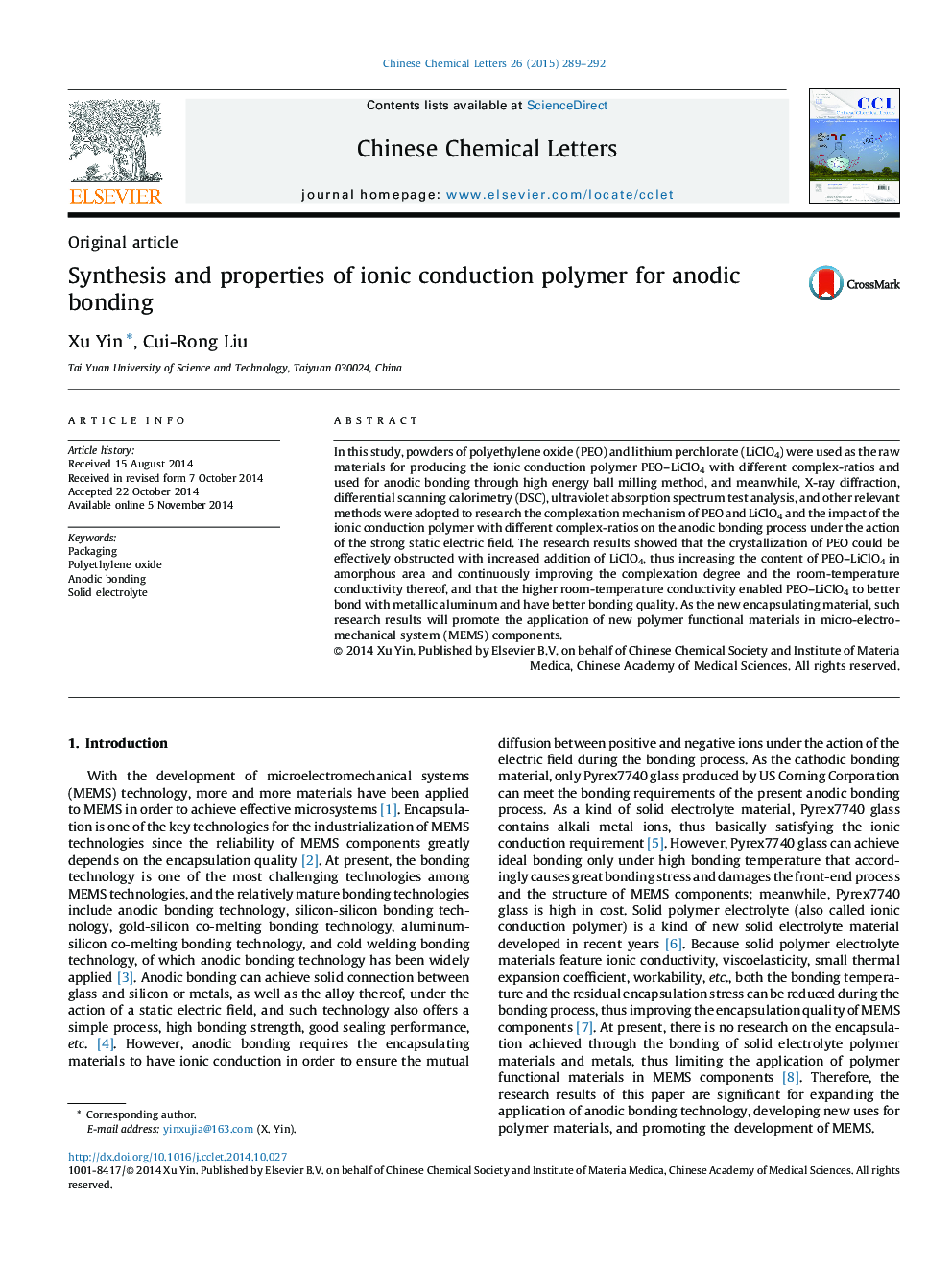| کد مقاله | کد نشریه | سال انتشار | مقاله انگلیسی | نسخه تمام متن |
|---|---|---|---|---|
| 1257310 | 971556 | 2015 | 4 صفحه PDF | دانلود رایگان |
In this study, powders of polyethylene oxide (PEO) and lithium perchlorate (LiClO4) were used as the raw materials for producing the ionic conduction polymer PEO–LiClO4 with different complex-ratios and used for anodic bonding through high energy ball milling method, and meanwhile, X-ray diffraction, differential scanning calorimetry (DSC), ultraviolet absorption spectrum test analysis, and other relevant methods were adopted to research the complexation mechanism of PEO and LiClO4 and the impact of the ionic conduction polymer with different complex-ratios on the anodic bonding process under the action of the strong static electric field. The research results showed that the crystallization of PEO could be effectively obstructed with increased addition of LiClO4, thus increasing the content of PEO–LiClO4 in amorphous area and continuously improving the complexation degree and the room-temperature conductivity thereof, and that the higher room-temperature conductivity enabled PEO–LiClO4 to better bond with metallic aluminum and have better bonding quality. As the new encapsulating material, such research results will promote the application of new polymer functional materials in micro-electro-mechanical system (MEMS) components.
Polymer solid electrolyte with ionic conductivity and aluminum by anodic bonding can connect at a certain temperature, pressure and voltage. This technique can be used for packaging device in micro-electro-mechanical system (MEMS).Figure optionsDownload as PowerPoint slide
Journal: Chinese Chemical Letters - Volume 26, Issue 3, March 2015, Pages 289–292
